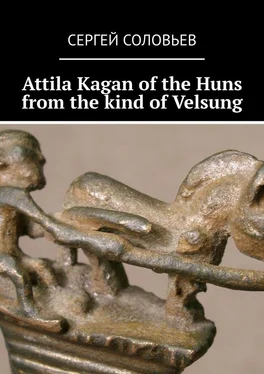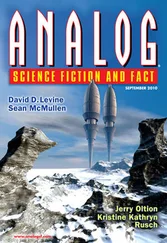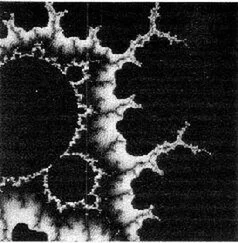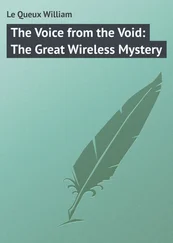1 ...7 8 9 11 12 13 ...19 No traces of the archaeological influence of the yamnaya culture in South Asia, including Tajikistan, were found. Linguistic studies also suggest that the languages of the Indo-Iranian group could come to South Asia not 3000 – 2500 BC, and later – between 2300—1200. BC e. These findings triggered a new search for a source for languages that were distributed during that period. As a result, the study showed that there was no mass migration of steppe nomads to South Asia from the pit culture in the early Bronze Age and the like; however possible. there was a migration from the steppe cultures in the late Bronze Age. Ymnaya were mined for metal in the Kargaly mining and metallurgical center.
The Catacomb cultural and historical community is an ethnocultural association of the Middle Bronze Age (XXV – XX centuries BC), spread in the steppe and forest-steppe zone from the Urals and the North Caucasus to the lower Danube. It was originally identified as an archaeological culture in 1901—1903. V.A. Gorodtsov.
Later, researchers identified local options that were identified as independent archaeological cultures. The concept of “catacomb cultural and historical community” was introduced into scientific circulation. It is represented by the monuments of the following catacomb cultures:
– old katakombnoy (XXV – XXIII centuries. BC.),
– Donetsk (XXIII – XX centuries BC),
– Middle Don (XXVIII – XXVII – XX centuries BC),
– inhulian (XXVIII – XX centuries BC).
The pioneer of the catacomb culture is V. A. Gorodtsov, who in the years 1901—1903 in the process of studying the barrow antiquities of the Seversky Donets drew attention to the burials in the catacombs – a specific funeral structure consisting of a vertical well (entrance pit), dromos (passage in the form of a corridor) and burial chamber (burial place). In accordance with the design features of the burial structure, the culture allocated by him was called catacomb. Catacomb graves are known in the same region and much later, both in the Sarmatian time and in the graves of the Salt-Maetsk culture. The very structure of the grave, consisting of a dromos and a burial chamber, often with a dome, has parallels in the famous grave of King Hinze in Germany, and probably with the construction of the famous domed tombs of Hellas. The most southern monuments are known in the steppes of Crimea, and the most northern – near Kursk and Yelets. Catacomb settlements are known on the Don (near Rostov), Kibikinskoye near Lugansk, Ternovskoye near Kamyshin on the Volga, etc. Later, researchers turned their attention to the heterogeneity of the catacomb monuments in different territories, which contributed to the identification of a number in the 50—60s of the XX century. local options. With the accumulation of archaeological material, prerequisites were created for understanding local variants as independent archaeological cultures of a single catacomb cultural and historical community, which was ultimately done in the early 1970s by researchers L.S. Klein and O.G. Shaposhnikova.
The problem of the origin of the catacomb culture (later the catacomb cultural and historical community) was posed at the beginning of the 20th century by V.A. Gorodtsov, almost immediately after the discovery of the burial mounds in the catacombs on the Seversky Donets, but still remains debatable. Researchers discuss autochthonous and migration theories of the origin of tribes of the catacomb community.Adherents of the autochthonous theory believe that the emergence of a catacomb community should be associated with the further development of the local pit population. Proponents of the migration theory suggest that the catacomb tribes genetically go back to the Yamnaya, but arise under the strong migration influence of the populations of the Ciscaucasia. The type of economy of the carriers of the catacomb cultural and historical community was determined by the environmental conditions of the steppe and forest-steppe zones. So, in the steppe pastoral or cattle breeding of the nomadic type, which was based on the breeding of cattle and small cattle, took root. In the forest-steppe, a model of shepherd or stall cattle breeding is prevailing with the predominance of cattle and pigs in the herd. For the catacomb cultural and historical community, tribal villages and low (up to 1 m) burial mounds without cremation are characteristic. Catacomb funeral device, ritual ceramic incense burners, ornament in the form of a cord stamp, flat-bottomed goblets, crouched corpse on one side. In the burials there are wooden carts. Ceramic implements carry elements of the culture of spherical amphoras and cord ceramics in Central and Eastern Europe.
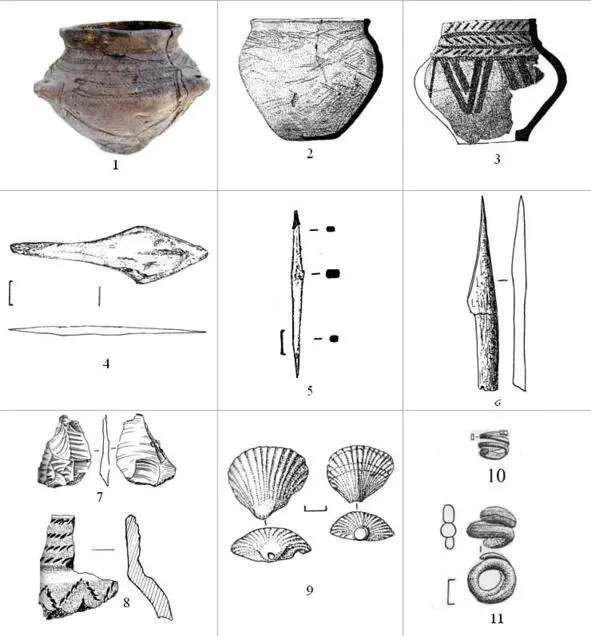
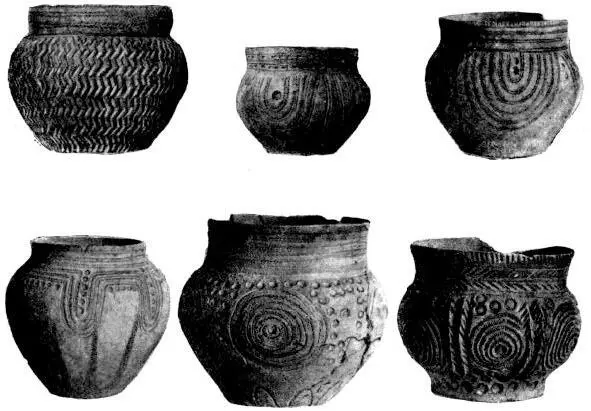
Temporal lobed rings Blackened tableware with a spiral ornament
The ceramics are also blackened, with a relief pattern, often spiral-shaped, which brings them closer to the Trypillian ones, but people of the catacomb culture didn’t apply the dishes, but squeezed it out. This brings the ceramics of the catacomb culture closer to the same Middle Hellenic one.
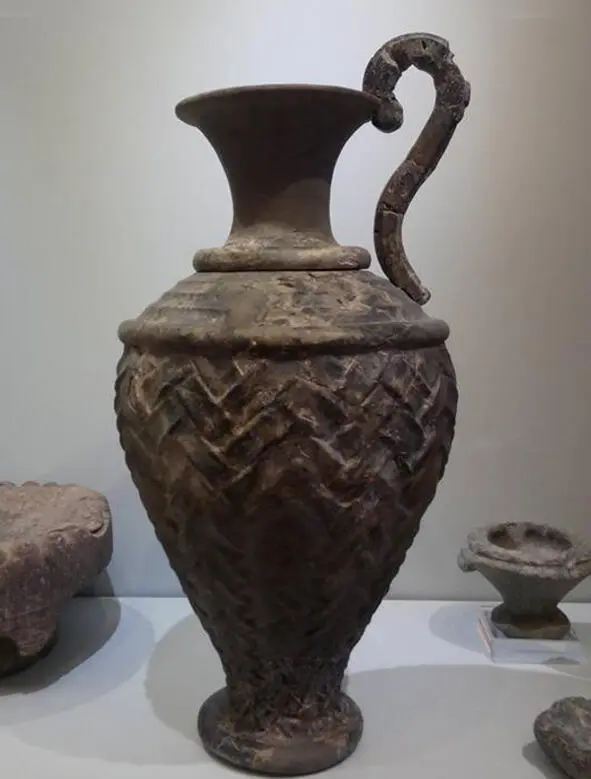
Minoyan ceramics of Crete.
Catacomb pottery differs from the primitive and uniform in the form of dishes of ancient yamnaya culture. Known flat-bottomed pots with convex sides and a narrowed neck, the surface of which is decorated with ornaments printed with prints of twisted rope, comb teeth or just a sharp object. The motifs of the ornament are triangles, zigzags, but circles and spirals are more common, reflecting the cosmic representations of ancient farmers about the solar deity and mysterious plant principles that turn grains into stems, which in turn give rise to many of the same grains.
In the territory of Donbass there was a metallurgical center. This is also confirmed by the finds in Donetsk catacomb burials of stone beater, which were used to crush ore before washing and smelting. In the inventory of the catacomb culture, objects from bronze are presented: leaf-shaped knives, axes with eyes, awls and bronze jewelry, but most of the implements were still made of stone and bone. In the Dmitrov mound No. 6 in the Zaporizhzhya region, at the entrance to the burial chamber, a wooden catacombs cart was found with a fully preserved wheel 5 thousand years old. A two-wheeled wagon with a preserved wheel 0.6 m in diameter is known from the Tyagunova Mogila catacomb burial in the Zaporizhzhya village of Maryevka. In the burial complex of Ulan IV of the West Manych catacomb culture in the Rostov Region, a four-wheeled wagon made in the XXIII century BC was discovered. e.
Skulls of the catacomb stage are distinguished by brachycrania and a higher arch than in the pit culture. Male skulls are characterized by a high mesocrane skull, highly profiled broad face, wide cheekbones, high transference, very large protrusion of the nasal bones. In the Dnieper steppe there are three craniological options:
– brachycranic – does not find analogues of the Bronze Age.
– mesocrane – reveals a distant resemblance to the skulls of the Afanasyev culture of Altai.
– dolichocranial – similar to the culture groups of Noua and Srubnaya.
If we talk about the catacomb culture, apparently, the rite of neutralization of the dead, the dismemberment of dead bodies to neutralize their harm to the living, was not only inherited from the pits, but also received further development. So, among the catacomb tribes, the custom of decapitation (separation of the head), which can be considered on the example of the Middle Don catacomic culture, has spread.
Читать дальше
